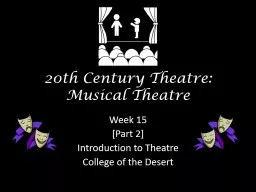PPT-Musical Decisions in Performing for Others
Author : olivia-moreira | Published Date : 2017-11-10
Like composers and arrangers performers make musical decisions When performers work in small groups such as trios these decisions need to be agreed upon by all
Presentation Embed Code
Download Presentation
Download Presentation The PPT/PDF document "Musical Decisions in Performing for Othe..." is the property of its rightful owner. Permission is granted to download and print the materials on this website for personal, non-commercial use only, and to display it on your personal computer provided you do not modify the materials and that you retain all copyright notices contained in the materials. By downloading content from our website, you accept the terms of this agreement.
Musical Decisions in Performing for Others: Transcript
Download Rules Of Document
"Musical Decisions in Performing for Others"The content belongs to its owner. You may download and print it for personal use, without modification, and keep all copyright notices. By downloading, you agree to these terms.
Related Documents














